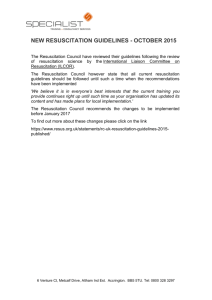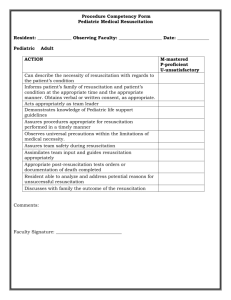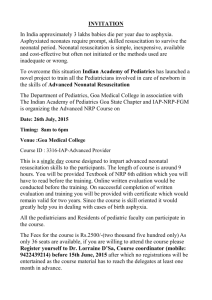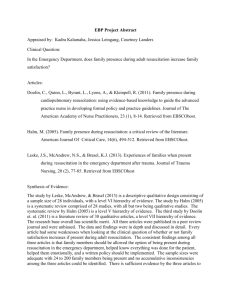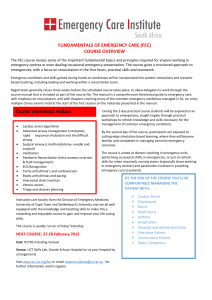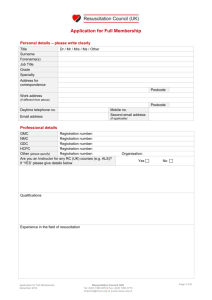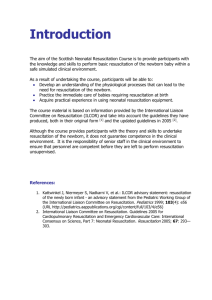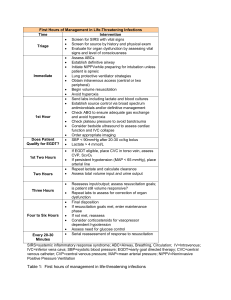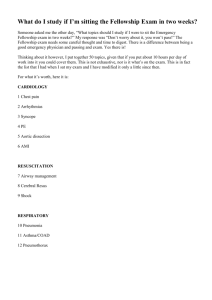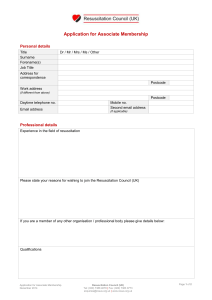Guidelines on giving intensive care to extremely premature babies
advertisement
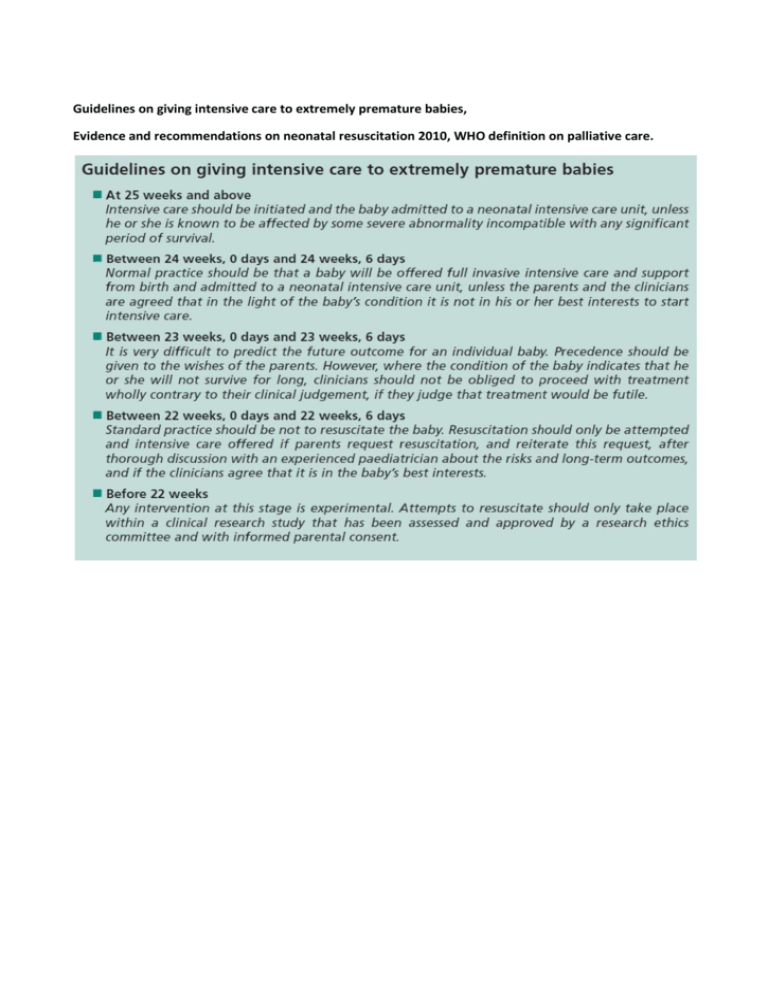
Guidelines on giving intensive care to extremely premature babies, Evidence and recommendations on neonatal resuscitation 2010, WHO definition on palliative care. Neonatal Resuscitation: 2010 International Consensus on Cardiopulmonary Resuscitation and Emergency Cardiovascular Care Science With Treatment Recommendations – Am Heart Ass 2010. Withholding or Discontinuing Resuscitative Efforts Non-initiation of Resuscitation Consensus on Science Some data are available to help identify conditions associated with high mortality and poor outcome. Such conditions may include extreme prematurity and anomalies that predict extreme morbidity or early death. Treatment Recommendation In conditions associated with uncertain prognosis, when there is borderline survival and a relatively high rate of morbidity and when the burden to the child is high, the parents’views on resuscitation should be supported. There should be a consistent and coordinated approach from the obstetric and neonatal teams in applying these guidelines and in communicating with the parents in developing an agreed-upon management plan when possible. Withholding or Discontinuing Resuscitative Efforts Discontinuation of Resuscitation Consensus on Science Studies suggests that babies born without a heart rate that has not returned by 10 minutes of age are likely to either die or have severe neurologic disability Significant selection bias in many of these studies, did the babies included in these studies receive “good-quality resuscitation?” Evidence is insufficient regarding how much time should elapse with a heart rate below 60 or above 0 beats per minute before discontinuing resuscitative efforts Treatment Recommendation In a newly born baby with no detectable heart rate which remains undetectable for 10 minutes, it is appropriate to then consider stopping resuscitation The evidence of outcome when the heart rate is below 60 beats per minute at birth and persists after 10 or 15 minutes of continuous and adequate resuscitative efforts at delivery is insufficient to guide decisions as to whether to withhold or to continue resuscitation
